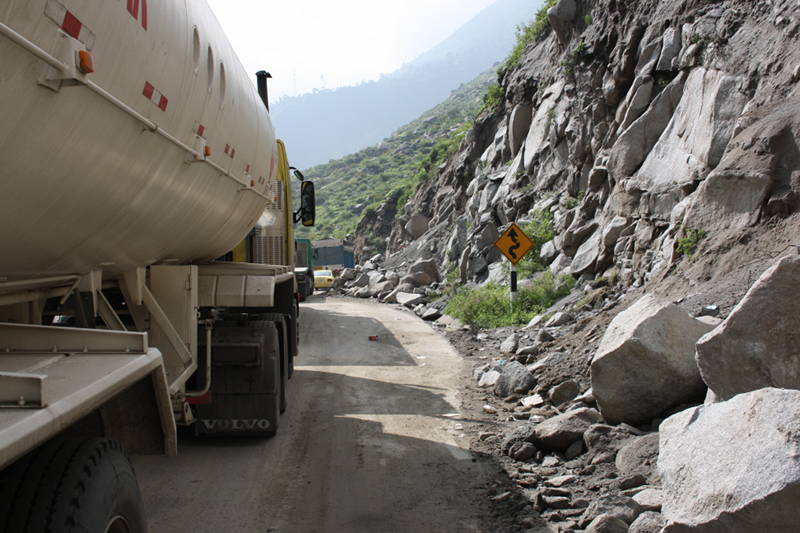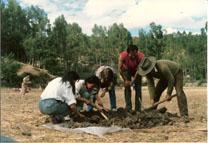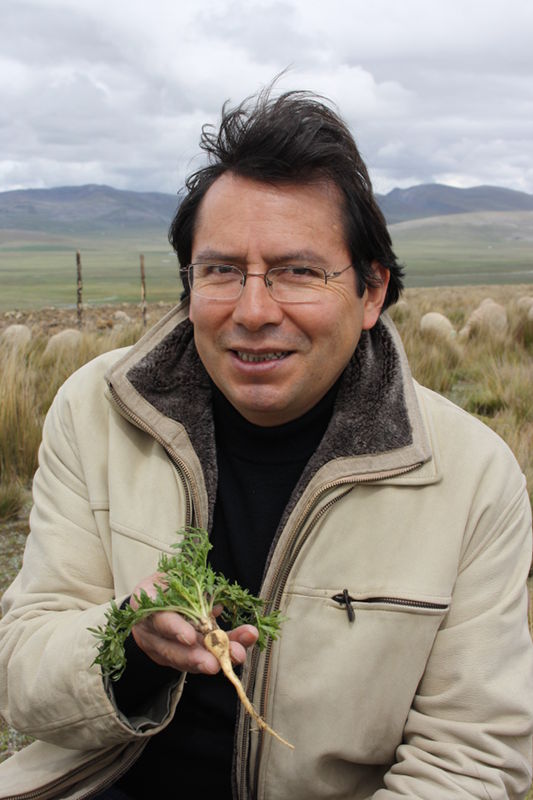You have no items in your shopping cart.
The road to maca
 Departure from Lima I was not sure of arriving to destination. At this time of year there is a lot of rain. The radio news announced landslides 30 km away from Junin. I was lucky not to be stuck on the road. Arriving on this disaster area roads were not obstructed.
Departure from Lima I was not sure of arriving to destination. At this time of year there is a lot of rain. The radio news announced landslides 30 km away from Junin. I was lucky not to be stuck on the road. Arriving on this disaster area roads were not obstructed.
The trip to Junin was done in 2 steps :

A first Collectivo (bus class) brought me to the Oroya. La Oroya is located three quarters of the way to reach Junin. La Oroya is the oldest and largest center foundry in Latin America. It exports of lead, copper and zinc in the world. Following this decision an hour I took a new Collectivo.

Lima is located at the sea. I climbed gradually up to 4000 meters. The closer I get to Junin, the more oxygen deficiency arises. On the way I can see the alpacas, sheep and vicuña live in freedom. These herds belong to the surrounding communities. Their presences indicate to me that I can Junin.
I have an appointment with the association of producers of maca. Its representative will make me visit the fields of crops maca.
 Maca grows in Peru more than 4,000 meters above sea level. In a volcanic soil rich in minerals and concentrated in trace elements, the maca root draws its source of emergency nutrition: calcium, magnesium, potassium, iron, silica, iodine, manganese, zinc, copper and sodium ...
Maca grows in Peru more than 4,000 meters above sea level. In a volcanic soil rich in minerals and concentrated in trace elements, the maca root draws its source of emergency nutrition: calcium, magnesium, potassium, iron, silica, iodine, manganese, zinc, copper and sodium ...
Maca is grown on the same field for 2 years. Then allowed to stand the ground for at least 5 years. It is enriched with new ore brought by rain and winds. Maca is a plant that bears very strong frost and drought in the harsh climate of Peru. The seeding is done from September until December. After 8 months we can start harvesting is done by hand.
In this region of Peru traditions of cultures of maca are preserved and respected forever.
Before planting and before crop farmers are the traditional "Pago a la Pachamama" (offering to the foster mother). This is to thank the foster mother as "an offering". During the "ceremony" producers share coca leaves and chicha (fermented maize drink).
 At harvest of maca is customary that we make a huatia to taste the raw roots of maca. It starts to dry in the sun for several hours. This technique allows to remove the bitterness and thus gain sugar. The oven is huatia provisional built on site with clods of earth. A fire is lit inside the oven to heat the clods. Once the fire was extinguished available within the embers of the maca root. Then the oven is broken so that the sod cover burning the roots. This ancient method in Peru, helps cook traditional and natural way. To enjoy the maca root is recovered from the mounds of earth burning after 30 mm of cooking. The huatia is a common way for local people to consume maca fresh.
At harvest of maca is customary that we make a huatia to taste the raw roots of maca. It starts to dry in the sun for several hours. This technique allows to remove the bitterness and thus gain sugar. The oven is huatia provisional built on site with clods of earth. A fire is lit inside the oven to heat the clods. Once the fire was extinguished available within the embers of the maca root. Then the oven is broken so that the sod cover burning the roots. This ancient method in Peru, helps cook traditional and natural way. To enjoy the maca root is recovered from the mounds of earth burning after 30 mm of cooking. The huatia is a common way for local people to consume maca fresh.
 My journey ended with that ritual. I wanted to tell you to let you know the place of origin of this unique plant. You know now from maca or you buy on the website of Peru Nature.
My journey ended with that ritual. I wanted to tell you to let you know the place of origin of this unique plant. You know now from maca or you buy on the website of Peru Nature.




Follow us